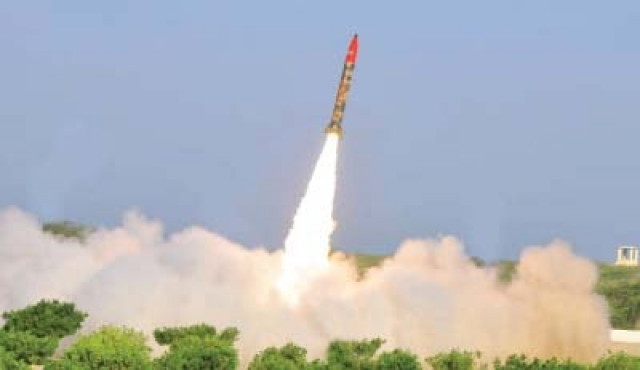More missiles — or more schools?
Spending defence takes away from our social sector development, which grows by 2%, compared to India’s 9%.

Governments on both sides think that they have achieved a higher level of strategic defence or deterrence. Both are proud that the latest versions are more accurate than the ones fired in the past, meaning that, from as far away as 300 miles, they can kill quite accurately, and since they are nuclear-capable, they can kill a large mass of people while crippling the rest forever. Both sides think that the tests are unlikely to aggravate tensions between them. How should the populations of India and Pakistan interpret the assertion by both sides that the tests have been “remarkably accurate and precise”? What is clearly meant is that these weapons will kill more people on both sides with great exactitude. Should the people of India and Pakistan rejoice? And should their thinking change from what they felt when bilateral battles were conventional; and celebrate the reality that a nuclear war could annihilate both sides without anyone winning?
Doctrines of defence have become more sophisticated. Pakistan no longer relies on the declared intent of the ‘other side’. If India says it has no intention of attacking Pakistan, that is not enough; Pakistan will look at the level of India’s war capability to make its decisions about national security. It is the calculus of weapons which now decides how much a country will spend on its military budget. This was also the recipe for the arms race in which two rich nations of the former bipolar world indulged: The US and the USSR.
Take your gaze away from the spectacle of missiles ascending and descending and you will find disparities that no weapon system can equalise. If one looks at India’s growth rate today one can imagine that their missiles cost them not much in terms of how much was spent on them as a percentage of India’s GDP. On the other hand, Pakistan’s missiles have hurt the Pakistani people more because spending on missile defence takes away from their social sector development in an economy which is estimated to grow by a mere two per cent this year, compared to India’s nine per cent. We must remember that it was under the weight of matching the US weaponry that an economically-strapped USSR finally collapsed. And that goes to prove that merely being in an arms race, without actually going into battle, can mean a defeat for either side.
There are other disparities too. Pakistan’s development budget has been halved and most human development projects have been put on hold. Lack of education, or the wrong type of education (where students, even in the mainstream system are indoctrinated), has mired the country in extremism and this is partly the reason for the ongoing governance. India, Sri Lanka and Bangladesh, growing at rates three to four times more than Pakistan, are well set to meet the millennium development goals by 2015; Pakistan doesn’t have the Rs100 billion needed for education while it is shelling out Rs400 billion to its loss-making state-owned corporations. Historically, Pakistan has spent a scandalously low 2.5 per cent of its GDP on education — now this figure is a mere 1.5 per cent, all this while test-firing missiles that cost an astronomical amount. Meanwhile, some government departments are not being paid salaries; projects crucial to fast-growing cities have been set aside; schools in the countryside are being taken over by local strongmen while pupils sit out in the fields; and the Taliban, who fear nothing from our Hatf missiles, destroy schools in Khyber-Pakhtunkhwa without hindrance.
Published in The Express Tribune, March 13th, 2011.














COMMENTS
Comments are moderated and generally will be posted if they are on-topic and not abusive.
For more information, please see our Comments FAQ